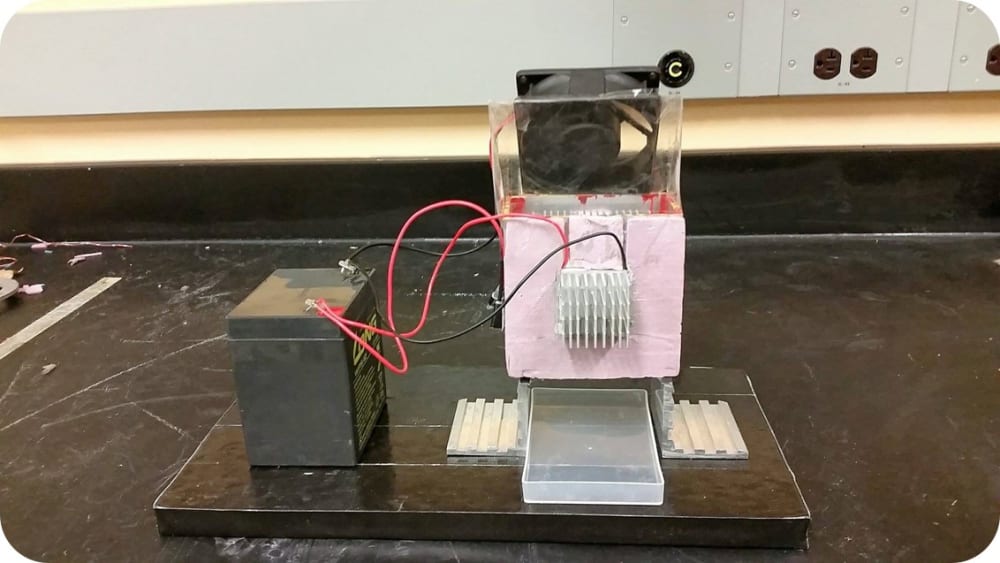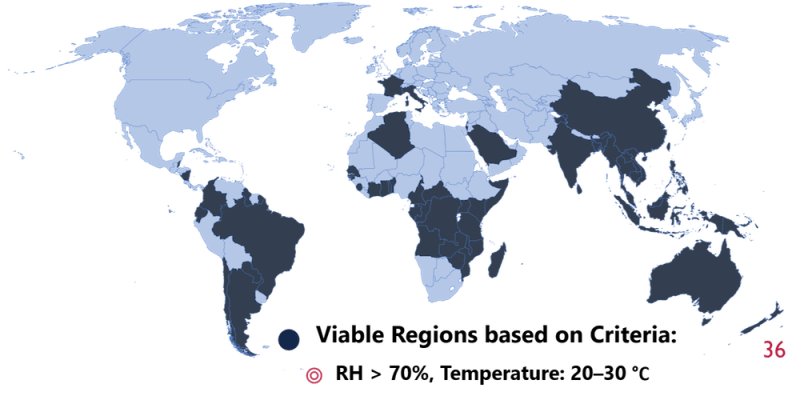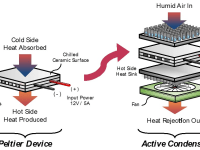Water is something that we here in Canada take for granted, yet nearly 1 billion people across the globe don’t have access to safe and clean drinking water due to cost, contamination and climate change. Our design project looks to alleviate this burden through the use of an atmospheric water generator (A.W.G). Our project objective was to develop a working prototype with the capacity to produce the average adult daily drinking water requirement of 3L.
Today, A.W.G. is predominantly performed by the circulation and compression of refrigerants through cooling coils which air is passed over similar to the operation of a household dehumidifier or air conditioner. There are a number of advantages for using a Peltier cooler rather than typical vapour-compression refrigeration, these relate to various safety and environmental concerns. By eliminating the use of moving parts or circulating liquid, the frequency of maintenance is reduced. Our novel solution incorporates the use of a Peltier device to perform this condensation. The Peltier device is a thermoelectric cooler that operates by running a current through N&P type semiconductor materials to generate a temperature gradient following the path of electron flow. This effect produces a temperature gradient across the device’s two planar surfaces leading to the exposure of a cold side and a hot side. By taking advantage of this effect, we can use the cold side as our condensing surface and use principles similar to a bladeless fan system around the hot side to reject the waste heat as fast as possible. Based on our observations, we have not seen or heard of any currently working Peltier based water generation devices that will be applicable in developing countries.
Through various iteration improvements of our working lab prototype, our unit was found to be capable of producing up to 3L of drinking water within a 24 hour period in a controlled environment. Our design was produced, and can be reproduced using a majority of recycled materials and will be viable in developing regions with year round relative humidities greater than 70% and optimal ambient temperatures between 25-30 Celsius.
Our next prototype iteration incorporates the use of a bladeless fan which will enable us to scale-up our productions to meet the daily average water requirements of 40L for a household in developing regions. Additional strategies involve the use of solar power to reduce the operational costs of the unit. Our next steps involve working with local governments and not-for-profit organisations to conduct on the ground testing in developing regions such as Mozambique or Somalia that meet the above mentioned climate criteria. Further analysis will also be conducted with regards to filtration and mineralization of the produced water to ensure its safety for human consumption.
Like this entry?
-
About the Entrant
- Name:Mohammad Ziauddin
- Type of entry:teamTeam members:Mohammad Ziauddin, Ryan Fahey, Ryan Jung, Suhail Lakhani
- Software used for this entry:Aspen Hysys
- Patent status:none








